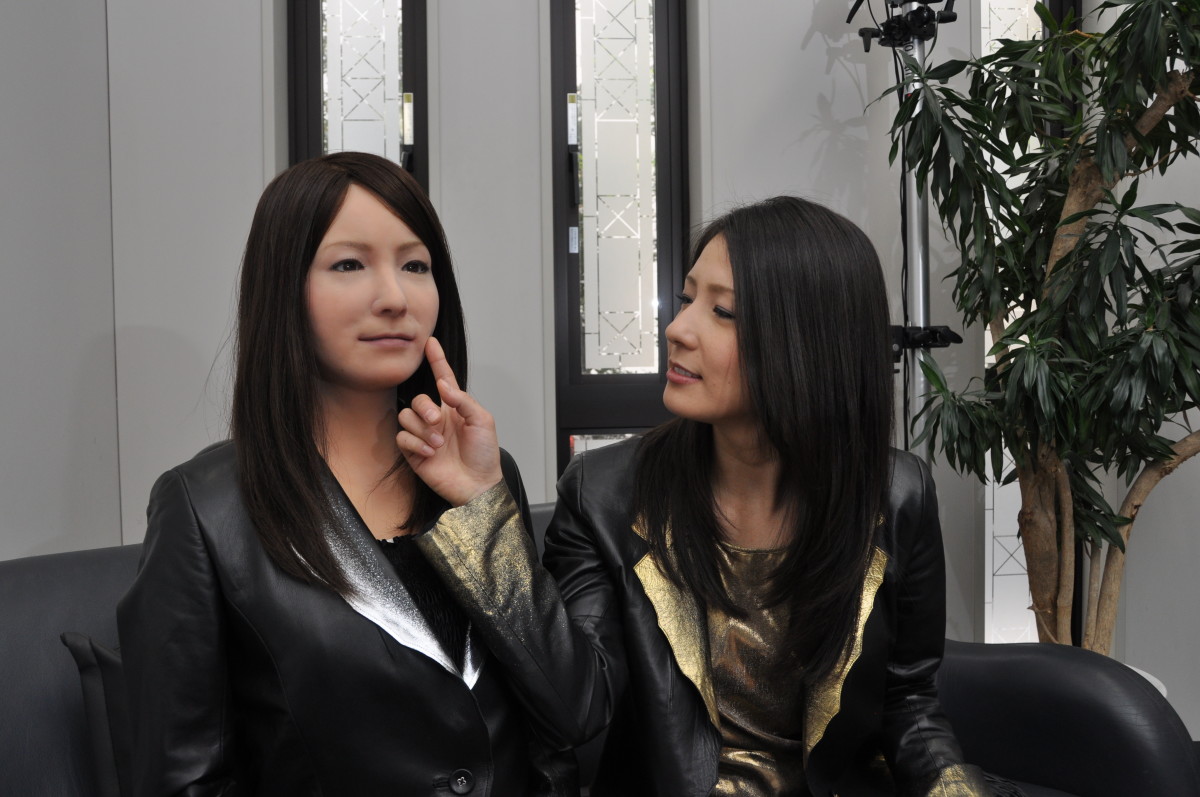How We Form First Impressions About Each Other
First Impressions

Forming a First Impression is a Natural Thing to Do
We humans are vulnerable creatures. We instinctively evaluate our situations so we can defend ourselves. When we meet someone for the first time, we are trying unconsciously, to assess if this person is friend or foe, to ensure our survival. On an unconscious level we are hard wired to make sense of our world. The data we interpret may or may not be accurate. Nevertheless, when we meet someone for the first time, it has very important implications.
How Long Does it Take to Form an Impression
We make first impressions spontaneously and with little cognitive effort. We are naturally predisposed to form first impressions. It comes from a form of self defense.
Our mind is innately designed to help us judge other people as efficiently as possible.
Princeton psychologists researched how long it takes us to form an impression, and found it takes 1/10 of a second to form an impression of a stranger from seeing them. Longer exposures didn’t change these impressions.
Our conscious mind can handle approximately 40 bits of information per second. Our unconscious mind handles approximately 11 million bits per second. It is our unconscious mind that handles these first impressions we encounter. This way we don’t get overwhelmed, with all the other things we are doing consciously.
Interactions and First Impressions
We learn about others through a two way social process, we both learn about each other. We have a real need to learn about them, and for them to learn about us in the hopes we will be liked and respected. This is how we make sense of other people, by assessing their physical features first, and then focusing on their behavior. We are amazing at first impressions. Social psychologists, through many studies, have been able to show a remarkable accuracy in coming to conclusions about people with very little data in a first impression.
When we form first impressions, we are quickly looking to determine if that person poses a threat to us. We also look to feel positively about the other person if they can help us. We are intuitively designed to pick up aggression and trustworthiness in others. We generally expect people to be positive, negative people are more noticeable to us, and our minds are hardwired to detect negative behaviors.
We form impressions by:
-
appearance,
-
by the way they speak
-
the way they walk
-
by their body language
-
other non verbal behaviors such as how far away the other person stands from you, tone of voice, eye gaze, hand gestures and body positions. We are naturally attracted to people who stand with an open posture, who stand an appropriate distance away from us, who look at us for the right amount of time,
First Impressions are Important

Appearances and Communications
Appearance affects what we think about them, from whether we like them, to assessing their sexual orientation, to their trustworthiness. Appearance is the measure we use to rely on when we are forced to make their judgments quickly.
The less time we have to judge a person, the more we use our instincts, not facts. Appearance shapes everything including how much we like someone to their trustworthiness.
People are extremely influenced by appearances, even after they have interacted with them.
First impressions can be formed simply by a photograph, or a Facebook profile. Facial appearance affects how we feel and what we think about who they are.
First impressions are powerful enough to override what we may know about them from others. Appearance alone can override this knowledge. In a recent study, research subjects were told the people were gay or straight, yet the participants generally identified their sexual orientation by how they looked, despite the facts presented to them.
First impressions are powerful enough to override what we may know about them from others. Appearance alone can override this knowledge. In a recent study, research subjects were told the people were gay or straight, yet the participants generally identified their sexual orientation by how they looked, despite the facts presented to them.
Facial Expressions are Picked Up Instanteously
We also form first impressions by picking up cues from facial expressions.
In an article published in the scientific journal Current Biology, research done by the Institute of Neuroscience and Psychology at the University of Glasgow, explains what happens in our mind at first impressions. The researchers narrowed the basic emotions people would would show on their face to four:
-
Happy
-
Sad
-
Fear/Suprised
-
Angry/Disgusted
The scientists found anger and disgust shared a wrinkled nose
Fear and surprised share raised eyebrows
Through further study the study found deep down, they are the same in the unconscious mind. The difference evolved more for social reasons than for survival reasons. So when people are making a first impression, our facial expressions really signal 3 negative and 1 positive emotion.
In a study done by NYU, a team of researchers, led by Daniel Schiller, researched the neuroscience of first impressions and how they are formed. Participants were shown photographs of a face and while they read six sentences about that person, their brains were being scanned by an fMRI machine. Three of the sentences stated positive traits, and three stated negative traits. They were then asked about their overall impressions of that person.
People Draw Conclusions About Us From the Way We Speak

The Way We Speak and First Impressions
Scientific research studies have shown we make first impressions on appearance, on verbal and non verbal behavior, and by the way they speak. By listening to someone’s voice, we make snap judgments about their trustworthiness and aggression.
In a study conducted at the University of Glasgow, Scotland, Phil McAleer, the psychologist who led the study, researched how we make first impressions. McAleer, in his experiment, recorded 64 men and women who read a paragraph that had the word hello in it. There were 320 participants who listened to the hellos with different voices and rate them on 10 personality traits, including aggressiveness, trustworthiness, dominance, warmth, and confidence.
The study found the participants mostly agreed on which voice matched which personality trait. The pitch of the untrustworthy male voice was much lower than the male who was viewed as most trustworthy. McAleer believes this may be because a higher pitched male sounds less aggressive. Females were found to be more trustworthy when their voices rise or fall at the end of the word. McAleer believes this may be because when a woman drops her voice at the end, they are showing a degree of certainty, which is interpreted as trustworthiness. In the study, it didn’t matter if the participants were correct about the people’s personality. What the study showed, was the overall agreement the participants had about who they attributed the traits to.
We judge in a quick second how someone speaks. We decide whether the person is approachable or to be avoided. Scientists believe this is another example of evolutionary survival behavior.
Observing Behavior and First Impressions
We also make casual attributions about their behavior. We form our first impressions by concluding what is most likely the explanation when it is easily accessible or most noticeable to us. We create casual links from the characteristics and behaviors we observe.
From these impressions we develop decisions and interpretations that we may use for later information. We seek consistent information to confirm or deny our opinions, but biases can result and we may become resistant to believing something different than a first impression. When we encounter information that is clearly inconsistent with our impression it may still be difficult to change what we believe. first impressions are so strong even facts may not change what we think.
Our impressions are influenced by these cues, which we use to interpret from our own associations and accessible knowledge. We infer traits from the behaviors we observe and process this information superficially. We naturally explain the causes of behavior and events, known as attribution. Situational attribution is when we interpret someone’s behavior to be caused by the particular situation to try to make sense of what is going on.
What are Their Intentions Towards Us from a First Impression
When we meet someone for the first time we are trying to determine if they are a member of our group or an outsider. One of the major considerations and first impressions is if this person is trustworthy and competent. What psychologist have found out is that the two pair up. Either people are trustworthy and competent or untrustworthy and incompetent.
According to Amy Cuddy, a social psychologist at Harvard, when we first meet someone, we actually form 2 opinions about them. We are judging if they are trustworthy and competent they are. We are trying to figure out what their intentions are towards us. We are looking for warmth and strength/confidence in their personality. Cuddy found through research, we base 80% to 90% of our first impression on these two traits.
We all form first impressions about other people and other people have first impressions about us.
First Impressions and Errors in Judgment
Most of our communication occurs on a nonverbal level. We rely on our sensory factors that pick up the way we dress, how we speak and smell, and our body language. All these things and so much more, factor into the first impression.
As soon as we see another person, we form an impression. As we learn more about a person, we tend to use this information. But first impressions continue to assert themselves even when we know different relevant information.
We also cognitive biases, which means we attach behaviors of other people to their own traits. But we also associate our own behaviors to this person we first meet.
Some people attempt to keep us from accurately perceiving them.
We can make errors in first impressions because either the other person is giving off a false impression, they have purposefully presented, or we have our own biases about that person. For example, you may have a bias towards someone because they remind you of someone else. This could influence your impression of them.
Making quick impressions sometimes causes lots of errors in judgement. But because we are hard wired to assess our environment, making some evaluation about the other person is better than making no evaluation. We can’t help ourselves. We automatically do this. Overall, science has found, first impressions are often quite accurate.
First Impressions and Liars
We also try to make sure the person is being truthful. Studies have shown we are only moderatley good at detecting deception on an initial meeting, even for experts. Psychologists believe this may be because people can be good liars because the cues they give off are slight, especially when the lies are for small things. Another reason we don’t detect liars is because we assume we are better at picking up untruths than we really are.
Being overconfident tends to lower our vigilance or working harder at detecting false statements. Another reason is we are sometimes paying attention to the wrong things. People who lie, can often control their facial expressions. Their body language may give them away, but we usually aren’t paying attention to that.

Biology of Our Mind and First Impressions
There are two parts of the brain that help us form a first impression. The posterior cingular cortex and the amygdala sort information based on our personal and subjective priorities, and come up with a conclusion about that person, a first impression. In a split second we factor everything from what we have heard about them, to the most minute detail we have taken in unconsciously. Our reactions to other people create an assessment as to whether this person has value to us in our social world.
Scientists believe our unconscious mind handles first impressions using mirror neurons that fire when we see someone else. Our mirror neurons reflect the other person’s emotions. So if we pick up on an unconscious level the person is uncomfortable or nervous, they make us uncomfortable. If the other person is calm, we feel calmer being around them.
First impressions form a long lasting opinion about what we think. We pick up cues about the people we meet.
The Importance of First Impressions
Personality traits help us know more about others. We give more weight to negative traits, and also “warm and cold” (central) traits. Traits such as this, give us a completely different perspective about them. Central traits strongly influence our opinions of others. At a first encounter, we automatically and unconsciously do a mental average regarding all the observations we made about the person, This tally gives us our first impression.
First impressions are important because the information we learn first is weighted more heavily than information we learn later. This is known as the primacy effect. Psychologists believe the reason for this may come from the idea that we desire to conserve our energy, so we are more likely to pay attention to information we get first. We also form an opinion based on our first impressions and look to process information in ways that validate our expectations.
There is also something known as the halo effect. When we get a positive impression from that person, we allow it to influence other factors about them.
Overall We Are Pretty Accurate About First Impressions
Most of us do not give ourselves enough credit about how good we are at making accurate judgments. Because so much of first impressions happen on an unconscious level, most people can’t articulate how they came to their first impressions. A lot more goes into forming a first impression than we probably ever realize. We do this on an ongoing basis and without even realizing it. All this proving, just how amazing we human beings are.
Do You Think Your First Impressions Are Usually Correct
How important do you think first impressions are?
- Women Pioneers in History
There are many stories of people in history. Women have made many contributions that have forever changed the world. Read about how the destiny of these women created a lasting legacy for us all. - How Our Past Affects Us
Our personal history lives within each of us. It speaks of our past, of experiences we have had, of people we have met. Our personal history is intertwined with our culture, our society, and the beliefs we have formed. Our personal history is... - How to Succeed According to Andrew Carnegie
Andrew Carnegie was a poor immigrant from Scotland and ended up becoming an American entrepreneur during the time of the Industrial Revolution. Carnegie started Carnegie Steel and became one of the wealthiest people in the United States. Carnegie...









